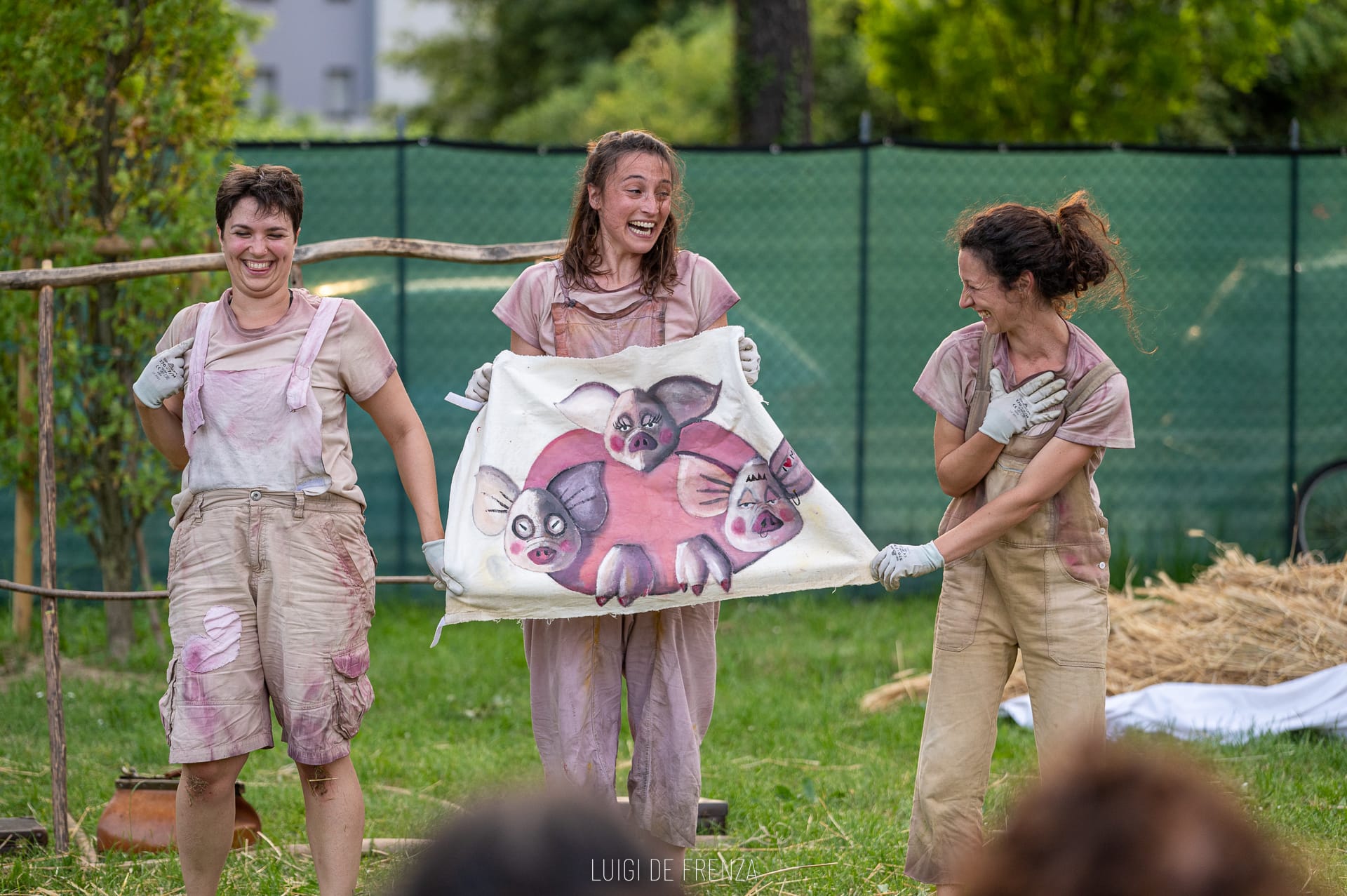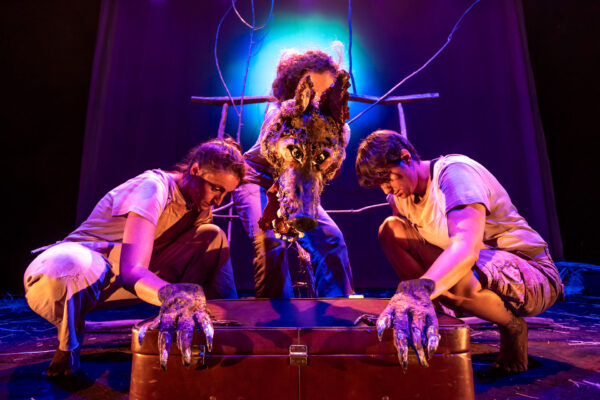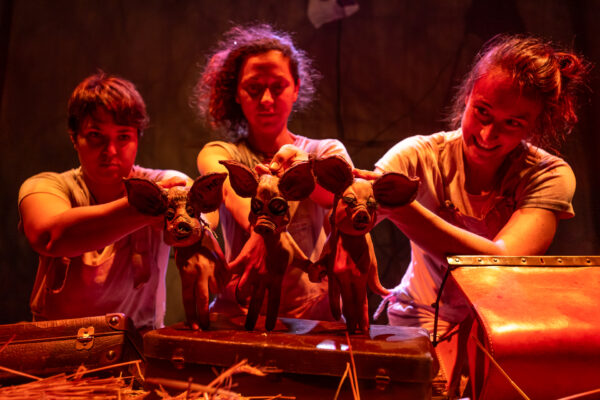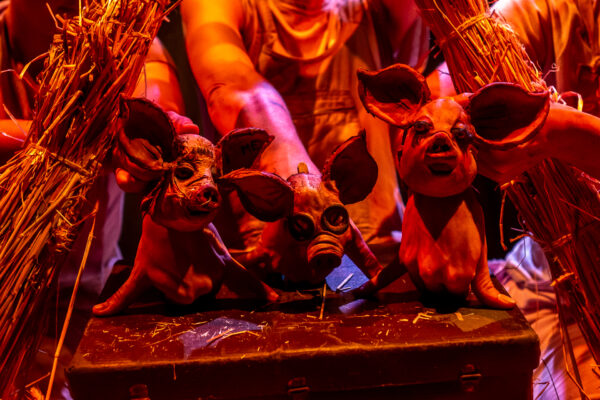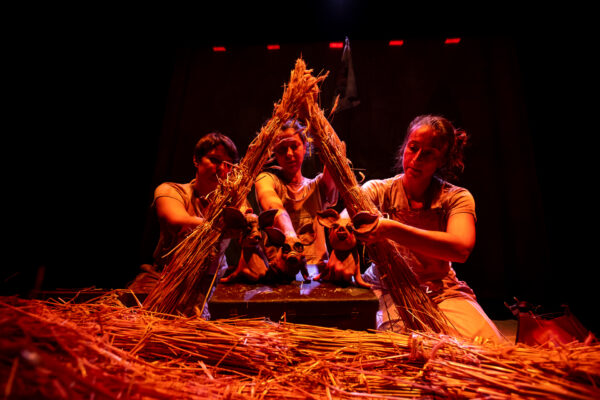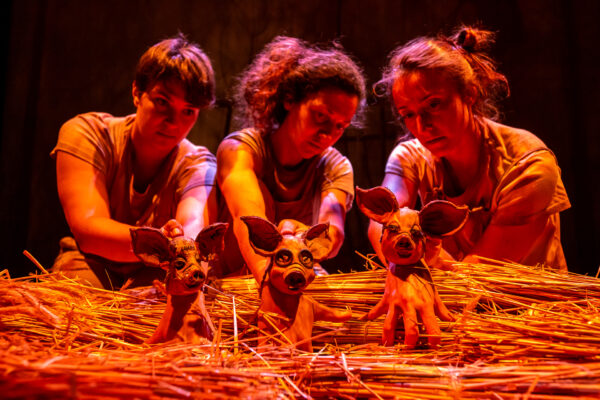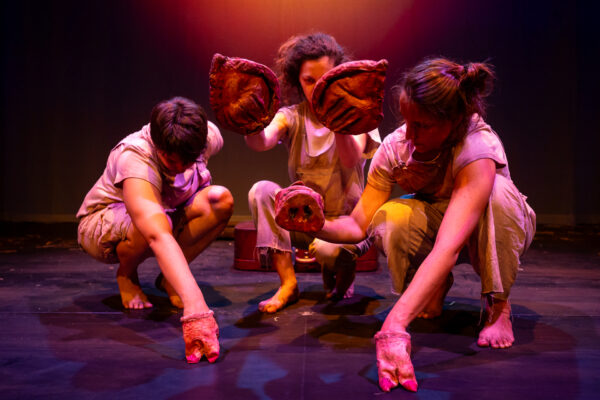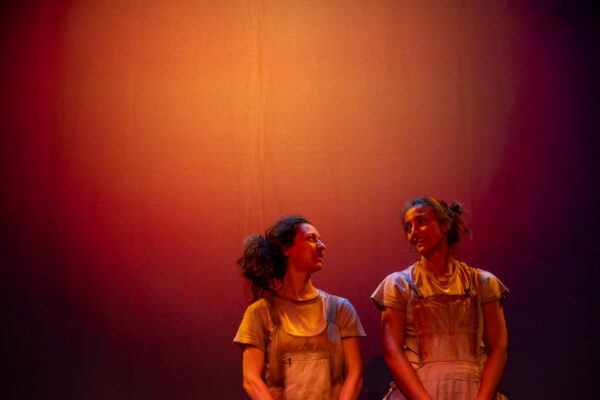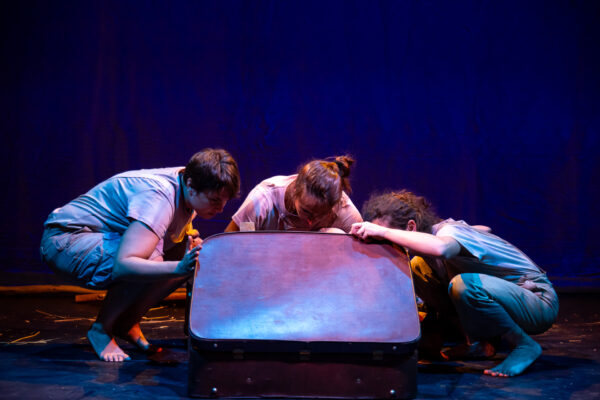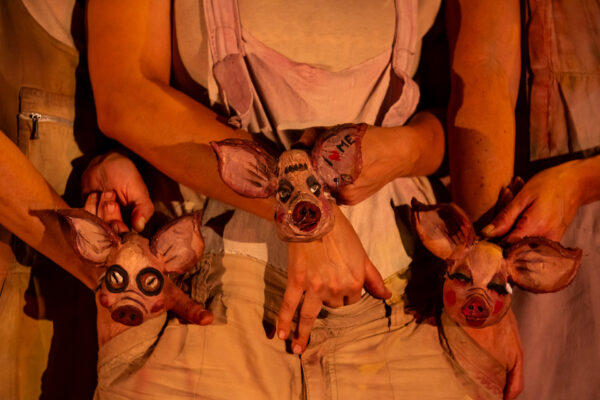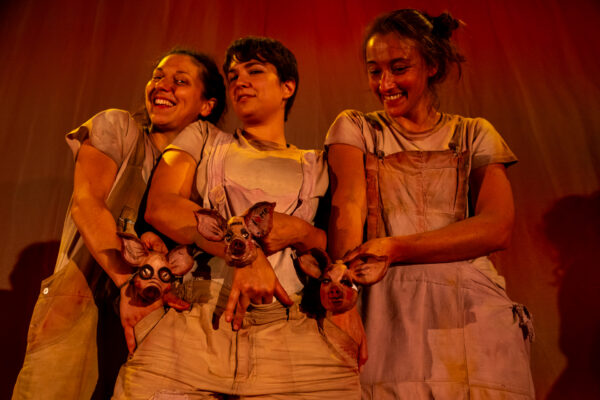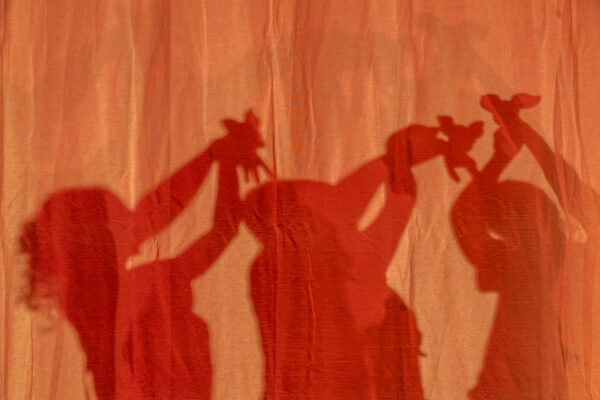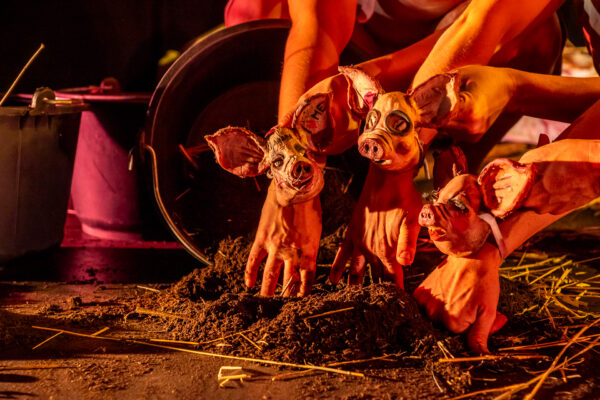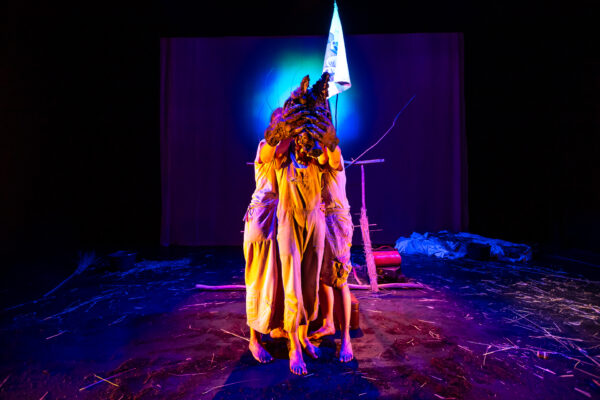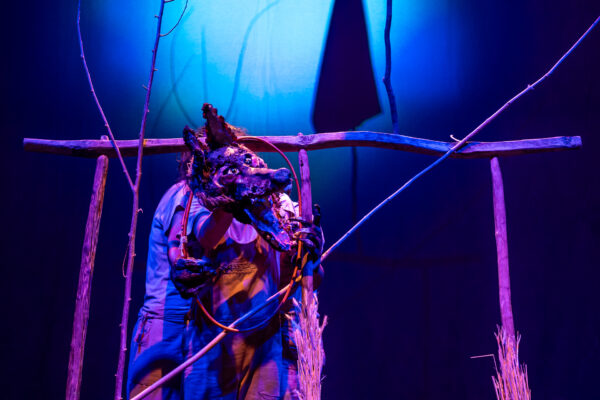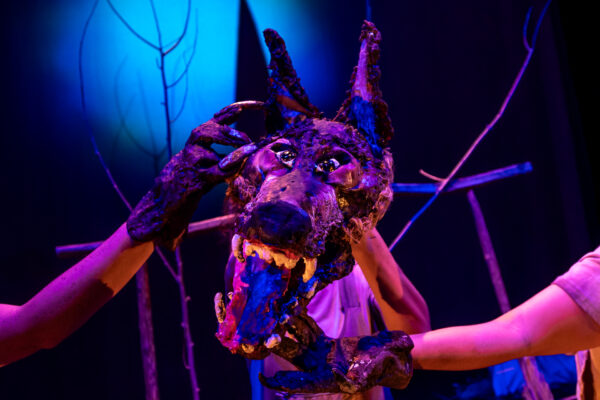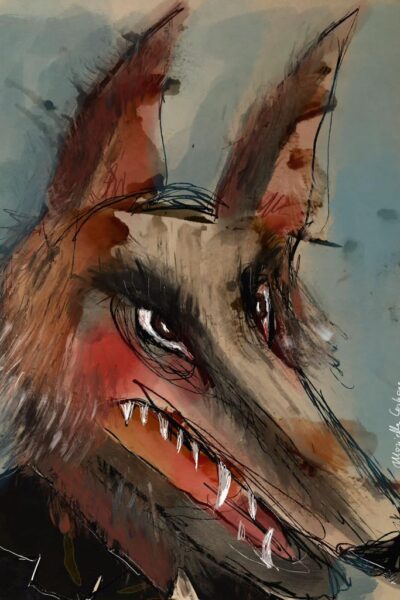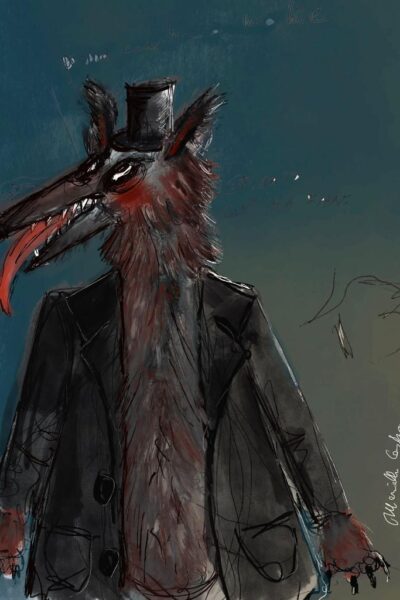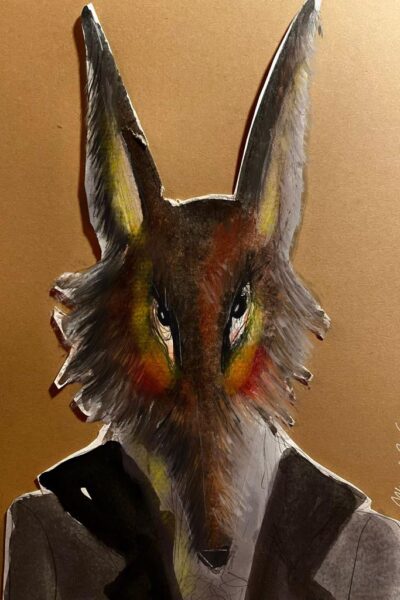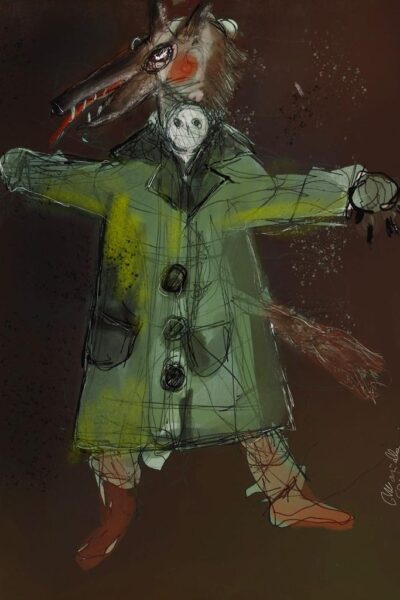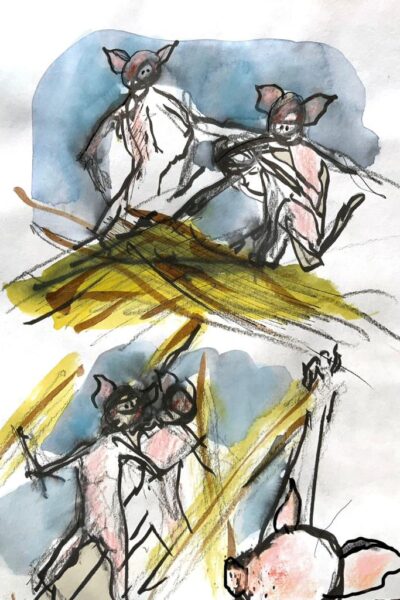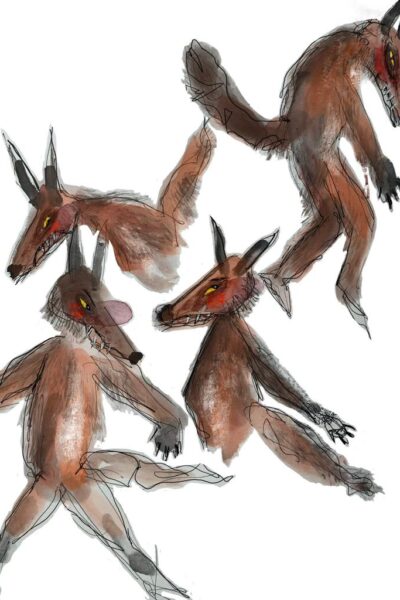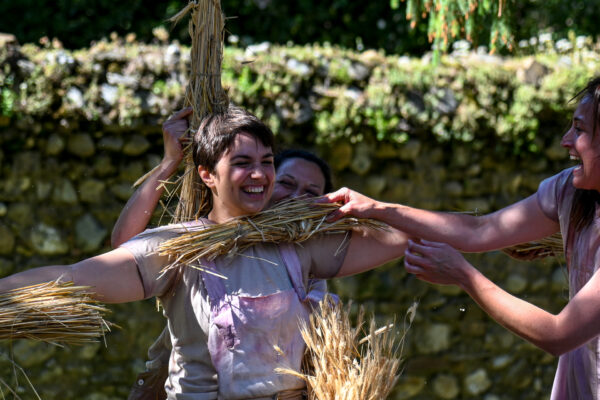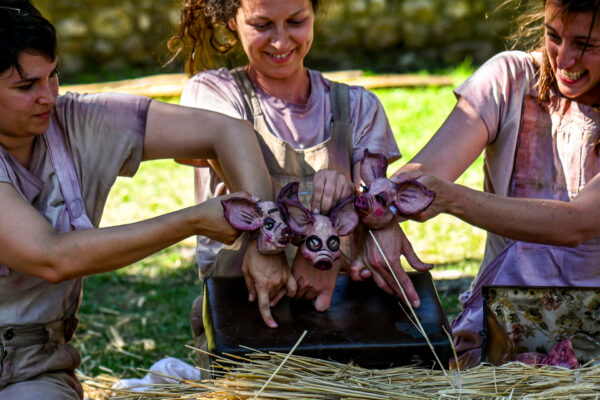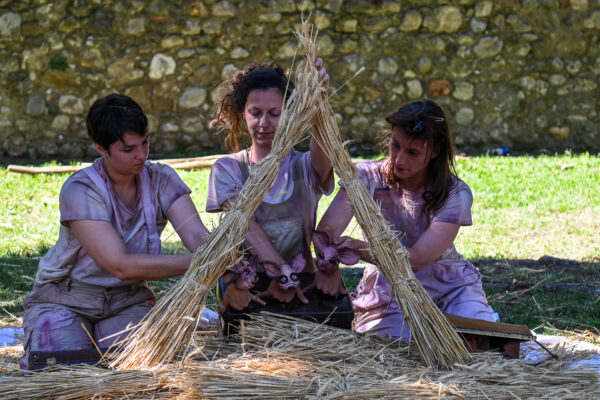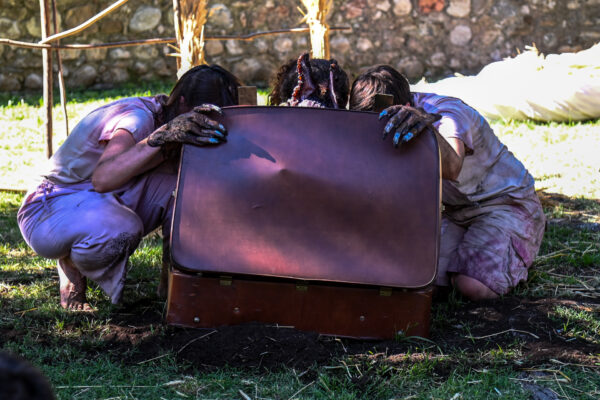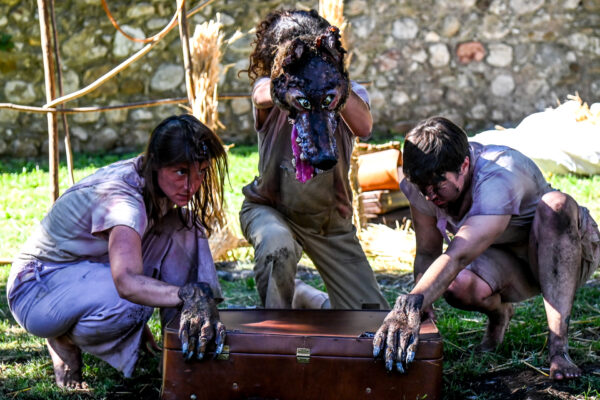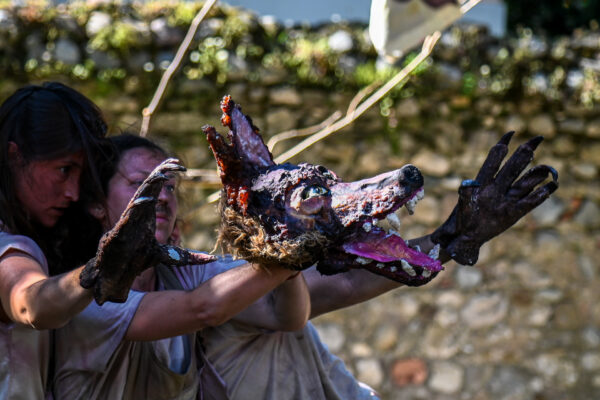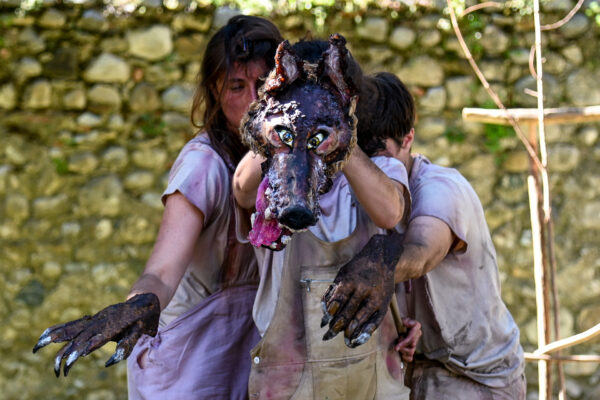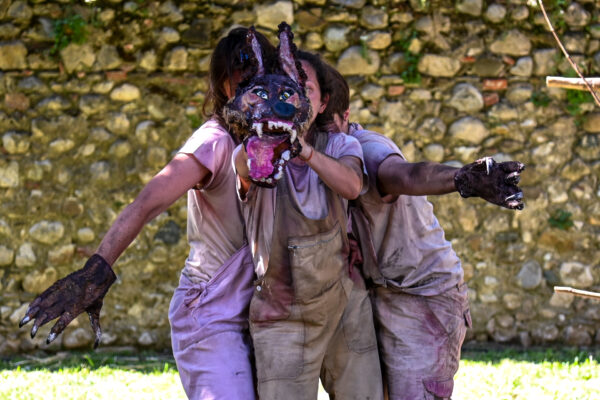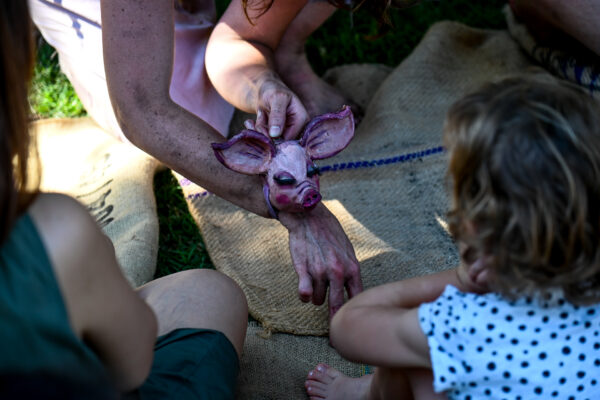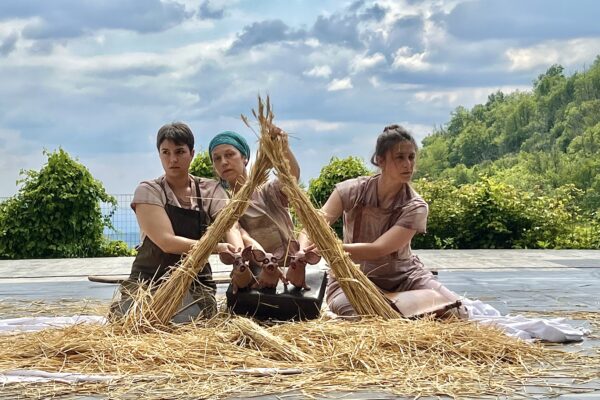what will the Three actresses will tell: they will bring to life a new version of the classic fairy tale without using any words with the aid of straws, wood and earth and by animating three little pigs, a sow and the wolf. The three little pigs are not three brothers but three sisters; they do not build individually for self-defence but share their homes to create together an unbeatable one in a fantastic “green building.” Faced with a house of such unity, the wolf will have no choice but to be invited to enter!
The show is presented in two versions: one for non-theater spaces and one for theaters.
What has always attracted me the most about the story of the Three Little Pigs was the idea of building an entire house with just straw, just wood, and just bricks. My childhood fascination with the materials the three little pigs used to build their houses outweighed the unfolding of the tale itself, where the poor wolf, in the end, loses. The boastful piglets from Disney’s 1933 musical, with their unforgettable chorus, didn’t evoke sympathy in me. I found ir was more amusing seeing the straw house with the doormat, the wooden house with a standing door without walls, and a piano entirely made of bricks (not to mention the portrait of the piglets’ dad in the form of a sausage!).
What has always attracted me the most about the story of the Three Little Pigs was the idea of building an entire house with just straw, just wood, and just bricks. My childhood fascination with the materials the three little pigs used to build their houses outweighed the unfolding of the tale itself, where the poor wolf, in the end, loses. The boastful piglets from Disney’s 1933 musical, with their unforgettable chorus, didn’t evoke sympathy in me. I found ir was more amusing seeing the straw house with the doormat, the wooden house with a standing door without walls, and a piano entirely made of bricks (not to mention the portrait of the piglets’ dad in the form of a sausage!).
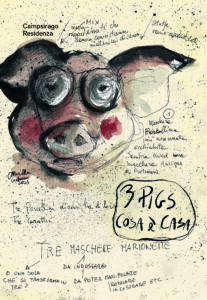 When I discovered participatory construction sites for straw and earth bioconstruction in my adulthood, I immediately thought of the three little pigs. Instead of bricks, there was earth, but this didn’t shake off the idea that if the three little pigs had joined forces to build their house instead of each making their own little house, they would have created a bio constructed home to live in together and suitable to better face the wolf. The hypothesis that the tale of the Three Little Pigs was invented by the brick industry lobby to promote industrial construction further made me even more curios. The tale first appeared in an English collection in 1843. It’s one of those stories that easily sticks in your head compared to older fairy tales. The Three Little Pigs tale follows a linear narrative, riding on the effective “threes” structure so commonly used in children’s storytelling. The diligent pig, the one who escapes the wolf, is a hard worker, unlike his two brothers who play and dance all day and hastily build their own houses. This was a great mindset for those aiming at the industrial development of the late 19th century, the rising middle class.
When I discovered participatory construction sites for straw and earth bioconstruction in my adulthood, I immediately thought of the three little pigs. Instead of bricks, there was earth, but this didn’t shake off the idea that if the three little pigs had joined forces to build their house instead of each making their own little house, they would have created a bio constructed home to live in together and suitable to better face the wolf. The hypothesis that the tale of the Three Little Pigs was invented by the brick industry lobby to promote industrial construction further made me even more curios. The tale first appeared in an English collection in 1843. It’s one of those stories that easily sticks in your head compared to older fairy tales. The Three Little Pigs tale follows a linear narrative, riding on the effective “threes” structure so commonly used in children’s storytelling. The diligent pig, the one who escapes the wolf, is a hard worker, unlike his two brothers who play and dance all day and hastily build their own houses. This was a great mindset for those aiming at the industrial development of the late 19th century, the rising middle class.
Then I read “The Three Little Pigs” by Giusi Quarenghi. In this beautiful picture book illustrated by Chiara Carrer, the story brings a revolution to the plot: the house of the third pig, or rather the third piglet, is a circle of fire, a circle that allows them to stay together safely without enclosing themselves within four walls. I also discovered that the space dedicated to Sumo wrestling, the dohyo, is constructed with straw, earth, and wood. I know very little about Sumo, but this coincidence opens me up to new associations with the Eastern world where straw is the triangle, wood is the square, and earth is the circle, like the Shintoist drawing by the monk Sengai Gibon (1750-1837).
This is how the idea for the play came by. The material used are strongly evocative of ancient worlds: the straw of the grain harvest, the game of building wood huts in the woods, the scent of the earth. Then there is the work with figure theater that allows us to open up to the dream world. Anna Fascendini, Director.
“When director Anna Fascendini contacted me to explain the theater project “3 Pigs. What is Home”, asking me to be part of a “journey” leading to the creation of figures that could be animated in a play, I immediately sensed a shared visual imagination and the possibility of playing with different forms, materials, languages and dimensions. A grotesque and dreamlike, fairy tale like and real, human and non-human imaginary world.
 Moreover, the words “What is home” and the work on materials on the one hand and the construction of objects/subjects to animate on the other, are two worlds dear to me: Figure Theater and architecture. Images, drawings, traces and colors were born in my head and in my hands almost bulimically, in addition to this my staying at Campsirago Residency in contact and in continuous dialogue with Anna and the staff involved in the project amplified and enriched my creative dimension.
Moreover, the words “What is home” and the work on materials on the one hand and the construction of objects/subjects to animate on the other, are two worlds dear to me: Figure Theater and architecture. Images, drawings, traces and colors were born in my head and in my hands almost bulimically, in addition to this my staying at Campsirago Residency in contact and in continuous dialogue with Anna and the staff involved in the project amplified and enriched my creative dimension.
The little pigs and the other figures were born and along with them other more well thought illustrations and drawings born all of a sudden from the suggestions and indications of Anna, the acting improvisations of the actresses Barbara, Sara and Benny, from the dramaturgy of Sofia and from the music of Luca, the only man in a woman’s creative. So “What is home” if not this?” Mariella Carbone
by an idea of Anna Fascendini | dramaturgy Sofia Bolognini | scenic objects and puppets Mariella Carbone | music Luca Maria Baldini | on stage Barbara Mattavelli, Benedetta Brambilla, Sara Milani | director Anna Fascendini | production Campsirago Residenza
Press review
A figure theater that leaves room for a very funny grammelot of sounds, yelps and grunts. But here the dramaturgy is in the naive gestures reminiscent of old-fashioned games in the country, when we would get our faces smeared with dirt, and fantasy was all that was needed to ignite the imagination. In “3 PIGS,” imagination draws utopian horizons. It is charged with idealism. It touches issues such as the environment and solidarity. Then one can rewrite the tale of the “Three Little Pigs” and turn it upside down. Rudimentary puppets appear with legs and snout of a pig. A wolf’s head becomes an alien; but it is only a stranger, and fear becomes curiosity, and curiosity becomes acceptance. The added value of this simple theater is in Luca Maria Baldini’s music, which projects us onto a sunny countryside we feel the heatwave over a wheat field. Baldini mimics the flavour of ritual. He builds, with Anna Fascendini directing, a small remote world. Vincenzo Sardelli – KRAPP’S LAST POST

